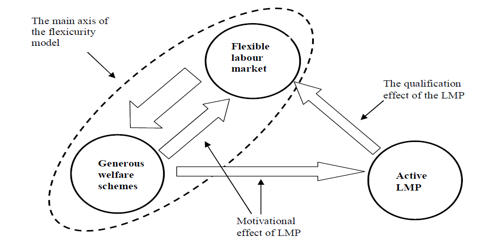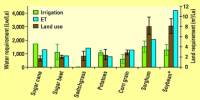Flexicurity is a welfare state model with a pro-active labor market policy. It is an integrated strategy for enhancing, at the same time, flexibility, and security in the labor market. The term was first coined by the social democratic Prime Minister of Denmark Poul Nyrup Rasmussen in the 1990s. It is a welfare-state model, originating in Denmark in the 1990s, that combines labor-market flexibility, social security, and a proactive labor market. The flexicurity model, first implemented in Denmark in the 1990s, is a combination of easy hiring and firing providing flexibility for employers, and high benefits for the unemployed providing security for the employees. In the mid‐2000s, the flexicurity concept was developed into a key EU policy concept. It drew its inspiration from the Danish and Dutch practices to combine labor market flexibility and security.
Flexibility in hiring and firing rules together with effective activation policies leads to high labor-market dynamics. The term refers to the combination of labor market flexibility in a dynamic economy and security for workers. It is such a new concept in the academic and policy arena that no universally accepted definition exists. It attempts to reconcile employers’ need for a flexible workforce with workers’ need for security – confidence that they will not face long periods of unemployment. The concept of “flexicurity”, i.e., the combination of flexibility and security in the labor market, attracted a lot of attention in the year prior to the Great Recession which started in 2008.
Flexicurity – the famous Danish labor market model – means that employers can easily hire and fire to adjust to the needs of the marketplace. The Government of Denmark views flexicurity as entailing a “golden triangle” with a “three-sided mix of (1) flexibility in the labor market combined with (2) social security and (3) an active labor market policy with rights and obligations for the unemployed”. At the same time, employees have a secure safety net in-between jobs.
The European Commission considers flexicurity as an integrated strategy to simultaneously enhance flexibility and security in the labor market. Flexicurity is designed and implemented across four policy components: 1) flexible and reliable contractual arrangements; 2) comprehensive lifelong learning strategies; 3) effective active labor market policies, and 4) modern social security systems providing adequate income support during employment transitions.
It is important to recognize that the flexicurity concept has been developed in countries with high wages, besides clear progressive taxation, as in, for example, Denmark. In recent years there have been different interpretations of the term flexicurity. The European Trade Union Confederation (ETUC) in particular rejected the claim that job security needed to be replaced by employment security.
















